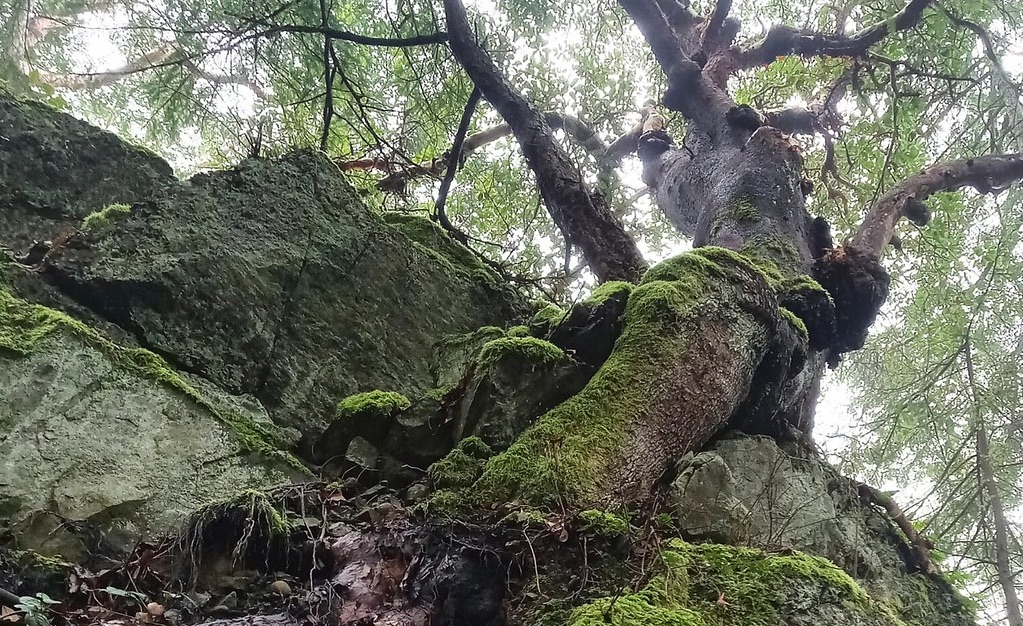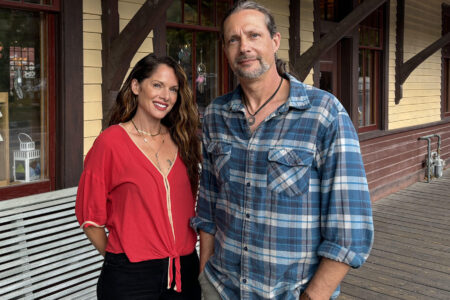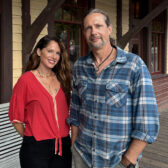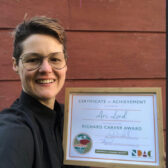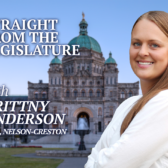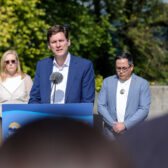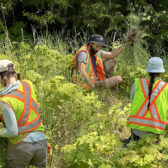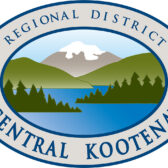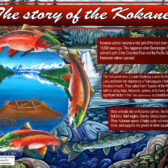Old-growth forests still not protected despite Province’s plan: Valhalla Wilderness Society
The Provincial government has fallen short in protecting B.C.’s old-growth forests says a West Kootenay environmental group and is calling for fulfillment of the recommendations of two auditor generals and the creation of two new parks.
In a New Future for Old Forests — a series of recommendations to protect old-growth forests released in 2020 — the Provincial government overlooked the fact old-growth forests are seriously depleted and that the rich coastal and interior rainforests that grow big trees are almost gone, said Amber Peters, biologist and campaigner with the Valhalla Wilderness Society based in New Denver.
However, a Provincial government-authored progress report released in late May stated that work was underway in response to 14 recommendations made by an independent panel in the review. Science has pointed to the merit of saving old-growth forests because it is a key to moderating climate change, said Peters.
“The minister of Forests has acknowledged that the province’s recent wildfire emergencies are worsened by climate change,” she explained, speaking from an area that just had its evacuation alert rescinded due to the Wilson Creek wildfire.
“The need to save old-growth forest, on the ground, now is dire. The province has made very little progress in terms of real protection on the ground. The recent progress report is another example of the talk-and-log policy that is driving the province toward mass extinction and ecosystem collapse that will detrimentally impact generations of British Columbians.”
The initial review in 2020 had created some optimism in B.C. because it was specifically crafted to protect old-growth forests, using logging deferrals — postponing logging — followed by permanent protection.
Nearly four years later the review has done little to permanently protect old-growth forests, Peters explained, despite the Province claiming in late May
“Almost all of its actual recommendations concern changes to governance, social equity and forest management, and do not concern actual protection,” she said. “The biggest thing that has come out of the 2020 review has been three-and-a-half years of mostly talk-and-log.”
Peters pointed to a single recommendation — to impose logging deferrals on areas “at very high and near-term risk of irreversible biodiversity loss” — that held promise, leading to the creation of the old-growth technical advisory panel (TAP) to identify old-growth forest at high risk.
“TAP found that many forest ecosystems that produce big trees have less than 10 per cent, and some less than one per cent of their historic amount of old-growth,” Peters explained. “Their report recommended 2.6 million hectares of big-tree old-growth for deferrals, emphasizing that they are ‘rare, at-risk and irreplaceable.’”
Close to home
Very little meaningful change has taken place in the West Kootenay, said Peters.
She admitted that protection of the Incomappleux portion of Valhalla Wilderness Society’s Selkirk Mountain Caribou Park proposal helped biodiversity in the region.
“(B)ut the area included a lot of clear cut areas and excluded the adjacent, ecologically rich inland rainforest valleys included in the society’s original proposal, which are still on the chopping block and being proposed now as the Selkirk Mountains Ancient Forest Park proposal,” she said.
As a result, the society has two park proposals to protect the most intact remnants of ancient inland temperate rainforest that still exist in the region. The proposals include the Selkirk Mountains Ancient Forest park proposal and Rainbow-Jordan Wilderness proposal.
“Both proposals are biodiversity hotspots that harbor a significant portion of the region’s remaining biodiversity in ancient forest with huge cedar trees,” Peters pointed out. “Protection of the Selkirk proposal would fulfill the recommendations of two auditor generals who have called for connection of existing protected areas, while protection of the Rainbow-Jordan Wilderness near Revelstoke would secure our most accessible, intact ancient rainforest in the southern interior wet belt.”
Down on deferral
Around 2.4 million hectares of forests have been subject to logging deferrals by the Province.
“Unfortunately, the Ministry of Forests (MOF) has removed over half of the deferrals recommended by the panel with rich, big-tree old-growth, and substituted old forest growing on poor sites that have trees of little commercial value,” said Peters. “Some areas recommended for deferrals have actually been logged.
“Deferrals are not real protection; they only mean that logging is postponed until government can negotiate with logging companies and First Nations on whether to protect them. For areas that did receive deferrals, why have so many not been protected? These deferrals are time-limited and when time is up, logging can ensue.”
Some deferrals have resulted in permanent protection, including the Incomappleux Conservancy in the Selkirk Mountains (2023), putting 58,000 hectares — but only 16,944.54 ha. of old-growth — into a new conservancy.
There is also 76,000 hectares of Crown land in Clayoquot Sound, divided into 10 new conservancies and, on July 3, 300 hectares of land in eight, widely dispersed sites was made to conserve old-growth.
“We feel this is very poor and that the government has been doing a (public relations) blitz of myriad new programs that all amount mainly to talk-and-log,” said Peters.
The Province has said “that it will take years to achieve the full intent of some of the recommendations. First Nations, local governments, people and businesses in B.C. will be essential partners in this work.”
Valhalla
Valhalla Provincial Park stretches from the far shore of Slocan Lake to the mountaintops.
The park was created in 1983 after eight years of hard-won battle by the Valhalla Wilderness Society (VWS). The society went on to successfully spearhead campaigns for the Khutzeymateen Grizzly Bear Sanctuary, Goat Range Provincial Park and the Spirit Bear Conservancies on Princess Royal Island.
The charitable organization also played one of the main roles in the protection of South Moresby National Park Reserve. Its Endangered Wilderness Map of 1988 initiated the movement to double B.C.’s park system to 12 per cent of the province.
VWS has led park campaigns that now protect over 560,000 hectares. The work resulted in numerous national and international conservation awards received by society chairperson Colleen McCrory.


